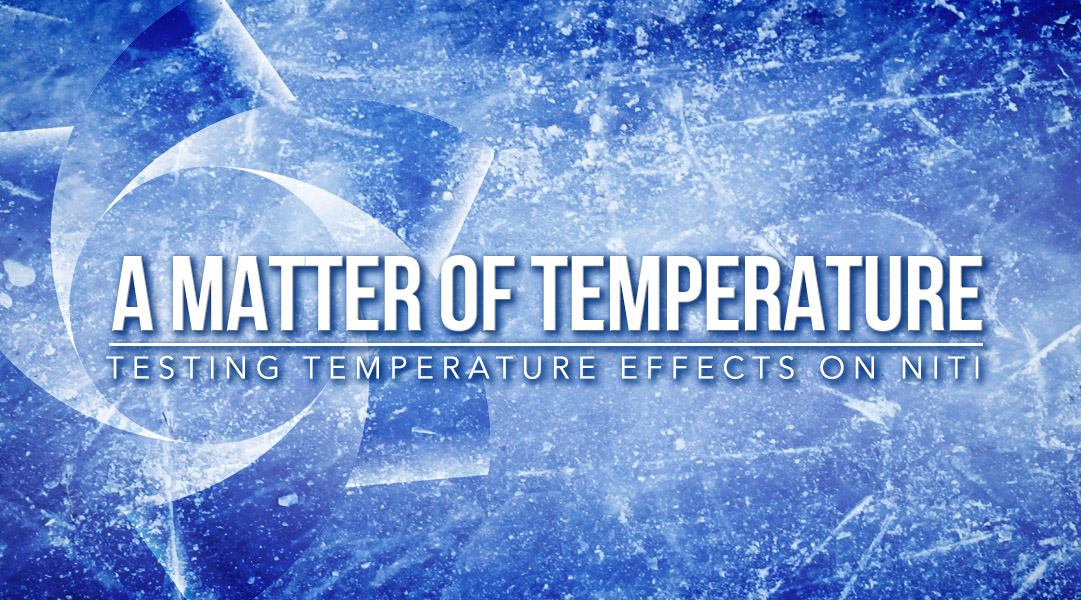
Effect of Temperature on NiTi Cyclic Fatigue
Dr. Andy Dosanjh – The University of Detroit Mercy
A pilot study conducted at the University of Detroit Mercy showed EdgeFile files to have significantly greater cycles compared to competing files. The purpose of this study was to examine the effect of different temperature changes on the cyclic fatigue of EdgeFile, Vortex Blue, and ESX rotary NiTi instruments. The three groups of NiTi rotary files were tested in a metal block that simulated a canal curvature of 60˚ and 5 mm radius of curvature. The block was submerged in a controlled-temperature water bath filled with water at four different temperatures. Thirty files from each experimental group were tested in the block at each of the four temperature cycles, and rotated at 500 rpm. Time to file fracture was recorded, and converted to number of cycles to fracture (NCF).
Vortex Blue files showed a significant decrease in NitTI cyclic fatigue as temperature increased from 3˚C to 60˚C. ESX files showed a significant decrease in NCF as temperature increased from 3˚C to 37˚C. EdgeFile files showed a significant increase in NitTI cyclic fatigue from 3˚C to 22˚C, and a significant decrease in NCF from 22˚C to 37˚C. For each temperature tested, EdgeFile files showed higher NCF than Vortex Blue files, and Vortex Blue files showed higher NitTI cyclic fatigue than ESX files. The findings showed that temperature does have an effect on the number of cycles to fracture for all rotary NiTi endodontic files tested. The findings from the study suggest that with the exception of files that are already in a martensitic phase, an irrigant chilled below room temperature seems favorable to increase NiTi cyclic fatigue.
In this in vitro study, temperature was found to have a significant effect on the cyclic fatigue of the NiTi rotary files tested. At each tested temperature, NCF of EdgeFile files were higher than NCF of Vortex Blue files, which was higher than NCF of ESX files. At all temperatures, EdgeFile files were found to have significantly higher cyclic fatigue than Vortex Blue files, which had significantly higher cyclic fatigue than ESX files. Since the cyclic fatigue of various file types was found to be significantly affected by temperature, future cyclic fatigue studies are recommended to be conducted at body temperature. Consideration should be taken in interpretation of studies conducted at room temperature.

